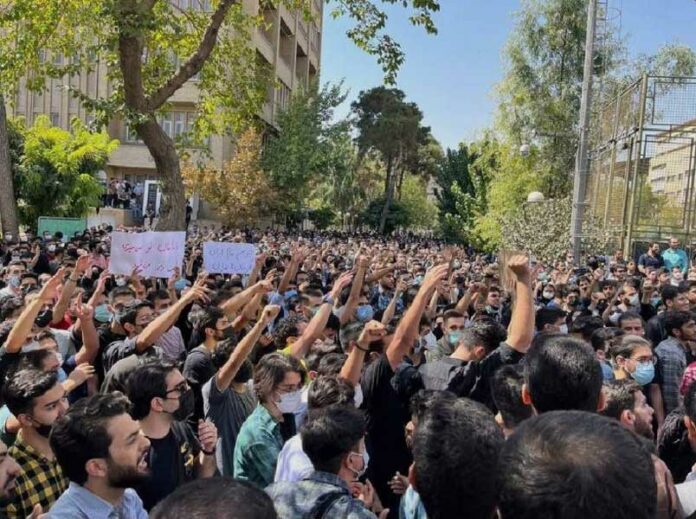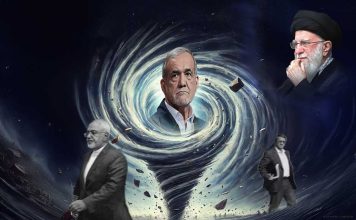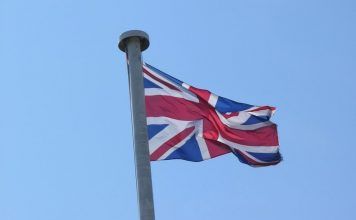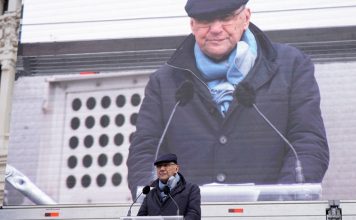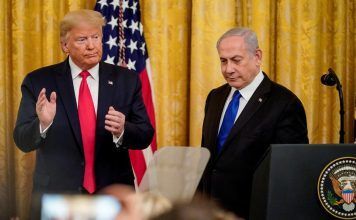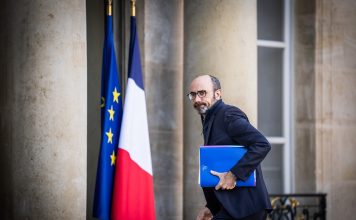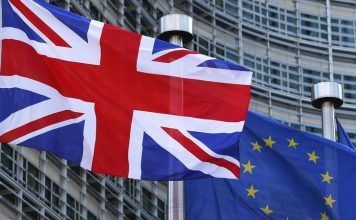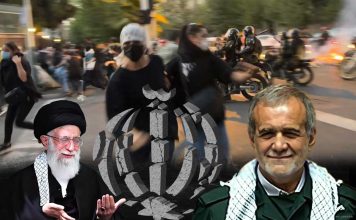By Kayhan Life Staff
Brigadier-General Mohammad Kazemi, the head of the Intelligence Organization of the Islamic Revolutionary Guards Corps (SAS), has claimed that 20 foreign governments were involved in the nationwide protests sparked by the death of Mahsa (Zhina) Amini while in the custody of the morality police in September 2022.
“The intelligence agencies of 20 foreign countries played a role in fueling the 2022 riots,” General Kazemi said in an interview with Supreme Leader Ayatollah Ali Khamenei’s office which was published on his website (KHAMENEI.IR) on June 19.
General Kazemi provided a partial list of the countries whose intelligence agencies he said encouraged the protests in 2022 in Iran, including the U.S., Britain, United Arab Emirates (UAE), Saudi Arabia, France, Germany, Canada, Belgium, Austria, Albania, Australia, Iceland, Italy, Kosovo, Norway, New Zealand, and Israel.
Iran Is Paying ‘Political and Diplomatic Price for Its Brutality,’ UK Official
“These countries’ intelligence agencies and embassies interfered directly and indirectly or through their proxies in political, security, diplomatic, legal, and cyberspace matters,” Kazemi explained.
“For instance, diplomats at the French Embassy in Tehran gathered information in the field during the October 2022 riots about the police and security forces and shared their findings with an intelligence officer at a European embassy,” Kazemi claimed.
ANALYSIS: How Hostage Taking Is An Integral Part of Iran’s Foreign Policy
According to Kazemi, Israel had tried to persuade several countries, including the U.S., to establish a fund to support the protesters financially.
Kazemi may have been referring to a proposal by Crown Prince Reza Pahlavi several years before the current “national uprising” for using frozen Iranian money to fund the strikes and protests in Iran.
According to Kazemi, 27 members of the European Union held a meeting in mid-October 2022, chaired by Germany, to discuss a proposal on recalling their ambassadors from Iran and closing their embassies.
He also alleged that Israeli and UAE intelligence agencies held periodic meetings in an Arab country to support the “riots.”
“Persistence is the enemy’s choice method against the Islamic Republic, and one of their main targets is the 2024 [parliamentary] elections,” Kazemi argued.
General Kazemi’s remarks and those of other senior state officials betray the regime’s existential and palpable fear of the next massive and inevitable wave of protests brewing under the hot ashes of the September uprising.
Iran Pardons 90,000 People Arrested During Nationwide Protests
In a meeting with police commanders on June 16 in Mahmoud Abad, in the northern province Mazandaran, Mohammad Reza Gholamreza, Deputy Interior Minister for political affairs, warned: “We may face new problems, given that the anniversary of the riots will be close to the Majlis [Iranian Parliament] elections [in February 2024].”
While most of Islamic Republic of Iran Broadcasting (IRIB) affiliates heavily edited Mr. Gholamreza’s remarks, its Tabarestan TV (Mazandaran TV) broadcast the segments in which he warned about troubles ahead for the regime.
“We are in a sensitive and challenging situation,” Gholamreza said. “When the gentleman speaks of the election at the start of the year it is because he wants to prepare us. What does it mean to be prepared? He does not say people but officials, i.e., you and I.”
“Do we read the situation correctly? Do we understand the potential danger?” Gholamreza asked. “We will face a new turmoil when Moharram and Safar end [first and second month of Islamic (hijri) Callander, during which Shia Muslims commemorate the martyrdom of third Imam Hussain], universities and schools open, which will coincide with the opening of the anniversary of the riots.”
“They will force us in a direction where elections will not be our priority. We will get into a fight. Our minds and thoughts will be preoccupied,” Gholamreza warned. “We must expect the worst security scenario. If we fail, then events could happen. Bad things will happen. We will get into a conflict at the zero hour. It will be too late by then.”
“Enemy is waging a cognitive and hybrid war against the great Iranian nation. It is planning and plotting and continues with its hostility,” Gholamreza warned at another point in his speech. “Media plays a significant role in neutralizing the enemy’s hybrid war. We must not neglect this vital issue. We must remedy any weakness in reporting events. Our journalists must do their utmost to provide correct and superior reporting.”
Some state media have warned the officials about the critical nature of the current situation.
On Sept. 29, 2022, the Tehran-based hardline Kayhan newspaper warned in an editorial that “officials should not think that discontentment has ended.”
“The current atmosphere is like fire under the ashes, which could spark a blaze,” the paper added.
In comments reported by Iranian media in March, the commander of The Law Enforcement Command of the Islamic Republic of Iran (FARAJA) special units said that forces under his command will be deployed to “400 locations to confront any protest in the new year.”

